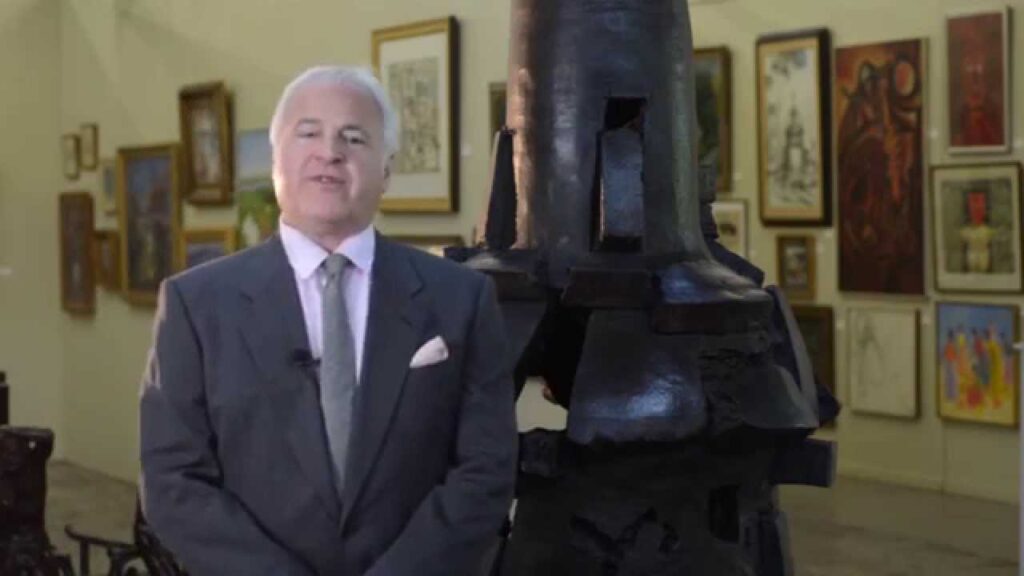"About seven years ago I was taping with Antiques Roadshow, in Arizona somewhere. A gentleman walked in with two pieces of pottery by Peter Voulkos, typical of his earlier work; Japanese inspired, hand thrown, earthenware pieces with brush painted flowers. He'd known Shoji Himada, the Japanese master, the national treasure, and was deeply inspired by him. This is what typified Voulkos' early work as a potter up until about the early fifties. What was fascinating about these pieces was the story behind them. The gentleman, it seems, worked in Greenwich Village, at a, I don't think we could call it a new age bookstore, but a pretty hip bookstore at that time, and Voulkos had come into New York City with these pots and a number of other ones that he'd given them to sell in the bookstore. They did that. They worked with local artists and they made some money selling the art that the artists brought and the artist got some pocket change. These were two that hadn't sold and the man kept them all these years.
As he further explained the story, the reason Voulkos was in New York City was because he had been teaching with Franz Klein at the Black Mountain College in North Carolina and followed Klein to Manhattan to meet the abstract expressionists, of which, of whom Klein was one. These pots were a point of divergence, because they were what got Voulkos to New York City and then suddenly he cast that aside, hanging out with people like Pollack and Klein and whoever else was working there, and then he created something like this which is totally different. As such, Voulkos became to ceramic what Klein and the abstract expressionists were to oil paint. It really marked a critical point, not just for Voulkos' work, but for what the concept of decorative ceramics in America was at that time and would become.
Another fascinating point about Voulkos was that he died fairly young. He died in his seventies. He died about a decade ago and unlike most aging artists, his work just got better and better as he aged. This pot behind me called Anastasi was made in 1999. A magnificent seven foot tall stack piece with all of the bells and whistles one looks for in Voulkos' work including his hands jammed into the side, and pieces are cut up in one place and stuck some place else. Very macho, very expressive and very powerful. Of the best of these, Voulkos made bronze castings. Nine Anastasi bronzes were made. Most of them made posthumously by the same man who made them with Voulkos while he was still alive, and we're really quite honored to have one of these masterpieces coming up in our June Modern Sale, 2014. I hope you come look at it. Free to the public. Come hang out, but not the least of which is Anastasi the bronze. Thank you."

